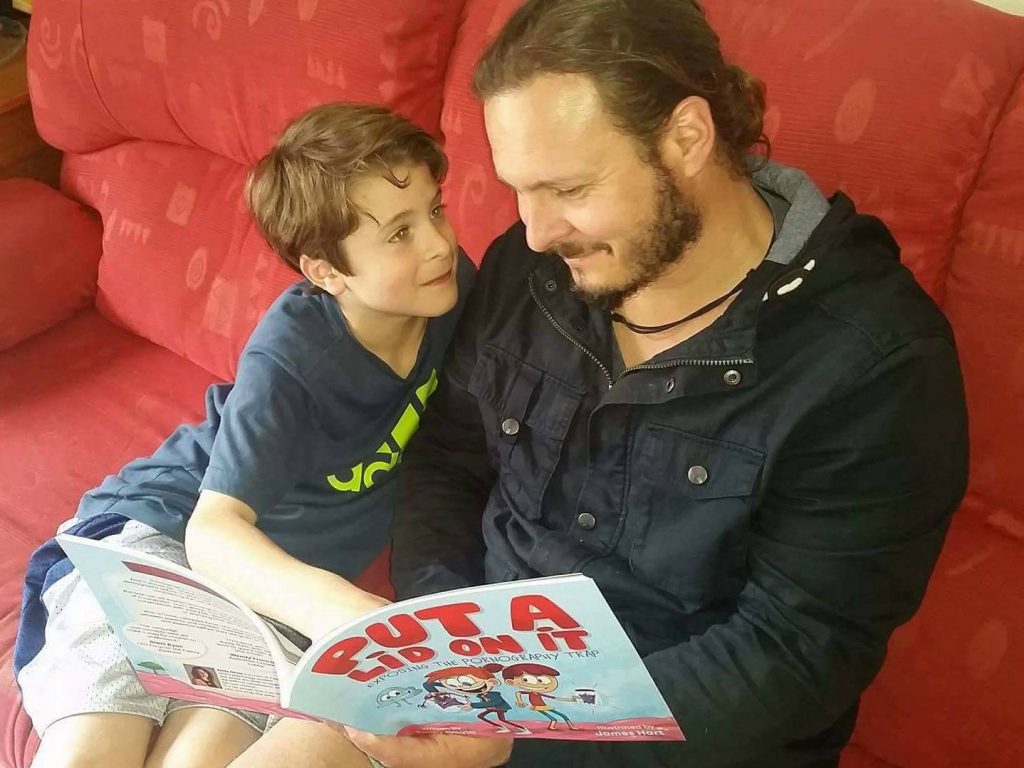At this moment, you’re reading an online story about how to talk with children about pornography and its impact.
At this moment, there are — at a conservative estimate — around 140,000,000 other people on the internet who are not looking at a story about pornography.
They are looking at pornography.
Of those people, some – in fact, many – will be children. From the age that they’re able to search on Google by themselves, there is the possibility of them seeing pornography online. A possibility that approaches a certainty as they spend more time online.
But how do you have that conversation with kids about what pornography is, what they can do about it, and what to do when they see it? With that in mind, Melbourne author Emily Olivia wrote Put A Lid On It, an illustrated book for kids (from the age of six and up). Emily wanted to address this modern problem in an approachable way, and from a Christian foundation.
“His friend showed him pornography, he didn’t know what it was; he had no one to talk to.” – Emily Olivia
Emily is herself a mother of three, currently studying psychology, and Put A Lid On It emerged from her concern for her own kids, and even the experience of her husband: “My husband grew up in a very stereotypical ’80s family where there wasn’t a lot of open communication about these issues. And when he went to a friend’s place as an 11-year-old boy and his friend showed him pornography, he didn’t know what it was; he had no one to talk to. And we didn’t want that for our kids!

Emma reads the book with her son Emma Olivia
“We wanted to be able to communicate on these big issues so that our kids would feel comfortable and confident to talk to us when issues came up.”
Emily’s own children are 4, 8 and 10, and she went searching for a resource that would help her broach the issue with her own kids. Not finding one, she wrote it herself.
“I hope it will empower parents to have this conversation. It’s not a conversation that any parent wants to have … And I hope parents will see that it’s a conversation they can tackle, that it’s not too hard — once you’ve set that foundation, it becomes a lot easier.”
80 per cent of eight to 16-year-olds have viewed pornography online
Emily acknowledges the disturbing nature of the statistics around children and pornography. The average age at which children are most likely to be first exposed to pornography is 11. And 80 per cent of eight to 16-year-olds have viewed pornography online.
For Emily then, with two children in that bracket, this is a live issue. “Most of their friends would have viewed pornography online — while they were doing their homework. They’re not seeking out this content, they’re finding it by accident. Kids can look up their favourite cartoon characters and they can get a whole lot of images or links to pornographic websites!

Emma’s husband reads the book to their son Emma Olivia
“That’s where I want to say: what are they going to do with that? Are they going to be confident to talk to you, their parents? That’s what I want to happen — because it is a matter of when they see it, and not if they see it.”
Emily also acknowledges the complexity of the issues — from questioning the sexualisation of the culture around us, to the issue of parents who might themselves be struggling with an addiction to pornography, which the children then come across.
“I want to see a generation of kids growing up in churches and Christian families free from pornography addiction.” – Emily Olivia
But she also believes there is a reason for Christians to have hope, despite the problems: “I think so many parents are struggling with this topic, and with pornography themselves, and it’s important to remember that we can never move outside of His love — the breadth and length and height and depth of the love of God [Ephesians 3:18]. Especially with pornography, people can feel like they’ve done too much, or they’ve seen too much and God can’t forgive them.
“But I think when we’re approaching this difficult topic, for our children, for ourselves, we can’t move outside of his love. And this is the place to come when we need help. Come back to him, because he will provide our peace.”
Emily describes one of the TED talks that she watched as background for the book, ‘The Great Porn Experiment’ The speaker describes how, for their research, he found a group of male students who regularly watched pornography. But a “control” group — a group that didn’t watch porn. But such a group couldn’t be found — there was no suitable group of young men in universities across America that wasn’t regularly watching pornography.
“And I want to see a control group!” Emily says, “I want to see a generation of kids growing up in churches and Christian families free from pornography addiction.”
Put a Lid On It will be released in mid-November.

